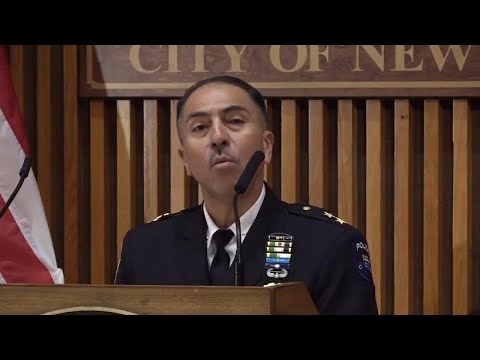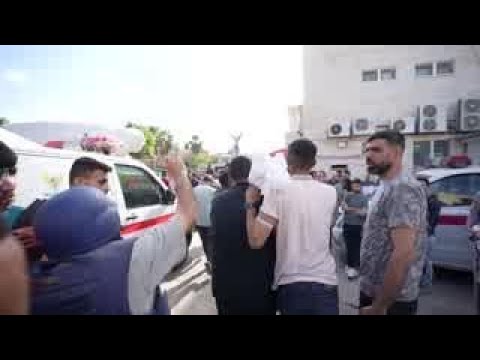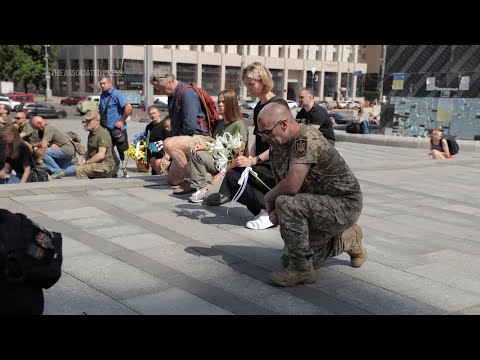(3 May 2024)
RESTRICTION SUMMARY:
++CORRECTS SOURCE++
ASSOCIATED PRESS
New York – 3 May 2024
1. Cutaway of press conference
2. SOUNDBITE (English) Chief Carlos Valdez, Commanding Officer, Emergency Services Unit, NYPD:
"On Tuesday, April 30th, ESU was tasked with breaching, clearing and securing Hamilton Hall at Columbia University, which at the time was occupied by protesters who had overtaken the building and barricaded themselves inside. This was a large scale, complex and dynamic operation designed to both overcome the people inside with minimal physical force, while at the same time containing them to where they were located, eliminating their access to other parts of the building so that arrest teams could move in, place them into custody, and remove them from the building."
++SEPARATED BY BLACK++
3. SOUNDBITE (English) Chief Carlos Valdez, Commanding Officer, Emergency Services Unit, NYPD:
"During the course of this operation, while clearing an unoccupied vacant area of the building on the first floor, one ESU member, a sergeant, did unintentionally discharge one round from his firearm. The sergeant was attempting to assist other officers in gaining entry to a locked office, to make sure there was no one hiding inside. The front of the office consisted of a metal frame door and a large glass nontransparent window. Gaining access to the office through the window ensured the least amount of damage to the structure, as opposed to cutting open the metal door jamb. Once the window was broken, the sergeant attempted to reach through the hole in the glass to unlock the door from the inside. To do this, he transitioned his firearm from his dominant right hand to his non-dominant left hand. When the sergeant transitioned his firearm to his non-dominant hand, he began to use his dominant hand to gain entry through the window, which is when the unintentional discharge occurred."
++SEPARATED BY BLACK++
4. SOUNDBITE (English) Chief Carlos Valdez, Commanding Officer, Emergency Services Unit, NYPD:
"The bullet traveled through the office glass and into the office they were attempting to gain access to. After the firearm discharged, the sergeant immediately assessed his team and ensured that nobody was injured. The team gained access to the office and found that there was nobody inside. In this case, the bullet landed on the floor of the office and didn’t travel anywhere else, so it was apparent that it had struck no one. The officer continued with this assignment, as we are trained to do, and notified his supervisor at the first opportunity. At no time were any police officers, members of the public, or any protesters in danger. This was purely unintentional."
++SEPARATED BY BLACK++
5. SOUNDBITE (English) Chief Carlos Valdez, Commanding Officer, Emergency Services Unit, NYPD:
"It’s called an accident for a reason. It’s called an accidental discharge. The sergeant at the time was trying to clear an area, an unknown location that was dark. So he moved. He made the decision to transition his firearm from his dominant hand to his non-dominant hand so he could better try to gain access to the office. With that, he unintentionally, pull the trigger off of his weapon and discharge the firearm. Moving forward, we we will obviously counsel the officer and send him to retraining and reevaluate him, and we’ll take it from there. He’s a very experienced officer in the unit. He’s been a sergeant in the unit now for almost eight years with an impeccable record."
++SEPARATED BY BLACK++
6. SOUNDBITE (English) Tarik Sheppard, Deputy Commissioner of Public Information at NYPD:
STORYLINE:
Find out more about AP Archive: http://www.aparchive.com/HowWeWork
Twitter: https://twitter.com/AP_Archive
Facebook: https://www.facebook.com/APArchives
Instagram: https://www.instagram.com/APNews/
You can license this story through AP Archive: http://www.aparchive.com/metadata/youtube/8360ea70c1ce4ba5bd2ff263886a54ad





